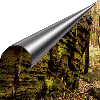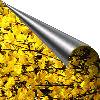

 | Wielkopolski National Park |  |




 | Wielkopolski National Park |  |


The symbol of the Park is the tawny owl (Strix aluco) [puszczyk in Polish]; probably, the name of the village Puszczykowo, comes from the name of this bird. Wielkopolski National Park was established on April 16, 1957. It is located about 15 km south of Poznan, on the left bank of the Warta River. The area of the Park is 7,600 ha, and this entails 4,550 ha of the forest. Parts of the Park's area, including 106 ha of forest and 144 ha of waters and swamps, are under special protection in the strict reserves. The Park protects forests growing on the ground moraines, as well as the hills of the head moraine with their characteristic eskers (furrows) and drumlins (loaflike hills).
This park is one of the biggest tourist attractions in the vicinity of Poznan. This part of the Great Poland Lakeland is known for its interesting landscapes, which entail picturesque gutter lakes, as well as the valley of the Warta River. The most valuable parts of the Park, from the ecological point of view, are protected as 18 strict reserves, including 10 forest reserves and 8 water and swamp reserves. Seven marked tourist paths, which cross the Park, and three educational nature trails, enable visitors to see this diverse and interesting terrain. The Park's Museum of Natural Science is located in Puszczykowo.
Natural values
The geomorphological structure of this area dates back to the glacial epoch. The diverse landscape was sculptured during the last glaciation (the vistulian glaciation, a complex episode lasting from 70,000 to 10,000 B.C.). All the major landforms, characteristic of the glaciated lowland areas, are represented in the Park. The majority of the Park area is located on the morainal upland, culminating in Osowa Hill at 132 m above sea level. Moraines, which are composed of sands and lodgement tills, are cut by tunnel valleys, now often occupied by lakes. The small, enclosed hollows are also usually filled with water. The drumlinoid landforms, kettle holes, lakes, and numerous erratic rocks are present in the Park's area. Altogether, there are 12 lakes in the park, ranging from deep and mesotrophic lakes which are surrounded by forests, to shallow eutrophic lakes associated with meadows and peat bogs. A visit to any of the lakes such as Lodzko-Dymaczewskie Lake, which is the largest of them, Jaroslawieckie Lake, Kociolek Lake, Skrzynka Lake, or, in particular Goreckie Lake (with area of 100 ha and which has two enticing and picturesque islands and is generally considered to be the most beautiful), might be very rewarding to any tourist. The River Warta and its tributaries, Samica and Wirynka, flows at the border of the Park.
Vegetation
The Park has a very diverse flora. The natural forests of the Park show dependence on the type of soil on which they are growing. The poor soils are overgrown with the pine woods, oak forests and mixed forests. The richer soils support acid oak and oak-hornbeam woods. There are about 900 species of vascular plants in the Park, including foxglove, cinquefoil, a twinflower, and a carnivorous sundew, which grows on boggy terrain. Among rare species, there are plants such as sorb (Sorbus torminalis), woodbine (Lonicera periclymenum), twin-flower (Limaea borealis), all being relicts of the glacial epoch. The cheddar pink (Dianthus caesius) and tormentil (Potentilla sterilis) may be ranked among the floral curiosities of the Park. Around the lakes, which support systems of water and bog plants, there are stands of ash and elm.
Fauna
Those who favor the photography of wild animals may, with a bit of luck, enrich their collections with pictures of a stag, roe deer, wild boar, badger, fox, marten, or hare. The rich world of birds is represented by over 200 species, which may be either indigenous or migratory. Among those rarer are the European roller (Coracius garrulus), kingfisher (Alcedo atthis), black woodpecker (Dryocopus martius), and buzzard. About 35 species of fish, including bream, tench, pike and eel, live in the lakes. The diverse invertebrate fauna includes over 3,000 recorded species of insects.



If you know any WWW sites that reference Polish National Parks please e-mail them to me.
Your input will be greatly appreciated.